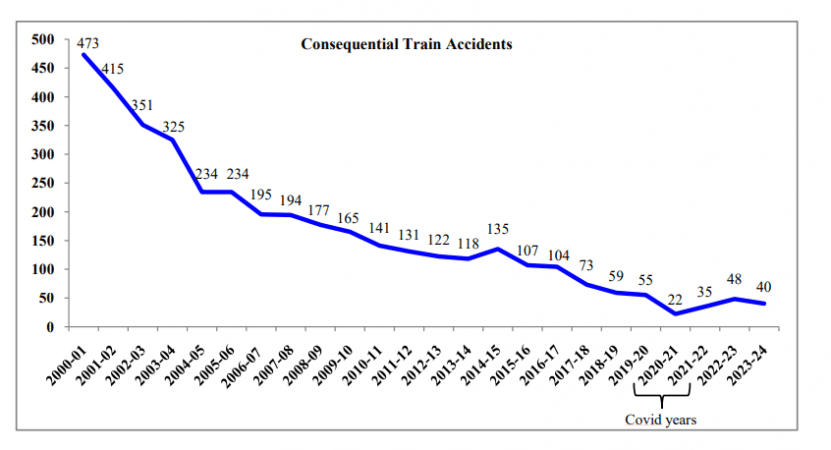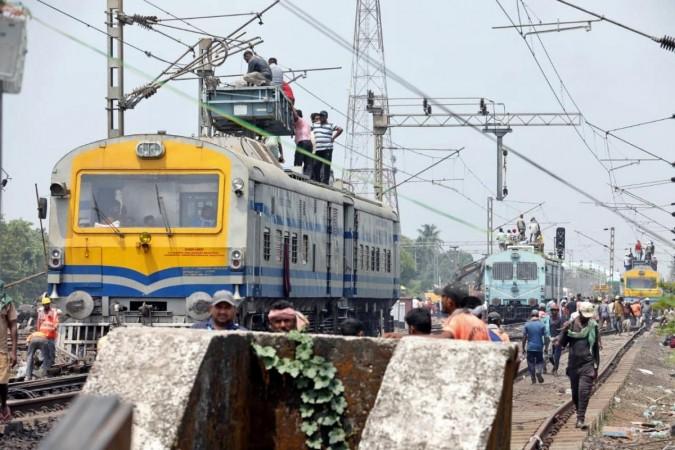
As many as 748 passengers lost their lives in 667 train accidents during the last 10 years in different parts of the country, and 2087 passengers got injured in these accidents that took place from 2014 to July 2024.
According to an official document, the causes of these accidents broadly include track defects, loco/coach defects, equipment failures, environmental factors, human errors, sabotage, etc.

Regarding the use of faulty wheels and coaches as revealed by the revealed by Comptroller and Auditor General of India (CAG), the government said that wheels for electric and diesel locomotives are procured and inspected as per Railway specifications and drawings.
"Regular under gear examination and other maintenance activities including Ultra Sonic Testing of Axle (UST), in accordance with the well laid down schedules, are undertaken for all passenger coaches", the government stated, adding, "Regular inspections are conducted for ensuring effective maintenance of coaching trains".

Furthermore, prescribed training at regular intervals is imparted to each and every maintenance staff to update their know-how about maintenance practices and the latest technology.
Various safety measures taken to improve safety in train operations are as under:-
- On Indian Railways, the expenditure on safety-related works has increased over the years.
- Electrical/Electronic Interlocking Systems with centralized operation of points and signals have been provided at 6,589 stations up to 30.06.2024 to eliminate accidents due to human failure.
- Interlocking of Level Crossing (LC) Gates has been provided at 11,048 level Crossing Gates up to 30.06.2024 for enhancing safety at LC gates.
- Complete Track Circuiting of stations to enhance safety by verification of track occupancy by electrical means has been provided at 6,609 stations up to 30.06.2024.
- Kavach is a highly technology-intensive system, which requires safety certification of the highest order. Kavach was adopted as a National ATP system in July 2020. Kavach has so far been deployed on 1465 Route km and 144 locomotives (including Electric Multiple Unit rakes) on the South Central Railway. Kavach is provided progressively in a phased manner.
- Axle counters for Automatic clearance of Block Section, BPAC (Block Proving Axle Counter) are provided to ensure complete arrival of the train without manual intervention before granting line clear to receive next train and to reduce human element. These systems have been provided on 6079 Block Sections upto 30.06.2024.
- A project for the provision of a Long Term Evolution (LTE) based Mobile Train Radio Communication system has been approved for 34,803 Rkms over Indian Railways.
- The project for the provision of Tunnel Communication has been taken up in various zonal Railways.
- Emergency talk-back systems and Emergency Alarm Systems have been provided in Vande Bharat Train sets.
- CCTVs have been provided to all Vande Bharat Express coaches. Till date more than 9572 coaches are equipped with CCTV.
Steep decline in train accidents
The government further stated that as a consequence of various safety measures taken over the years, there has been a steep decline in the number of accidents.
Consequential train accidents have reduced from 473 in 2000-01 to 40 in 2023-24. It may be noted that the consequential train accidents during the period 2004-14 were 1711 (average 171 per annum), which has declined to 678 during the period 2014-24 (average 68 per annum).
Another important index showing improved safety in train operations is Accidents Per Million Train Kilometer (APMTKM) which has reduced from 0.65 in 2000-01 to 0.03 in 2023-24, indicating an improvement of more than 95% during the said period.








